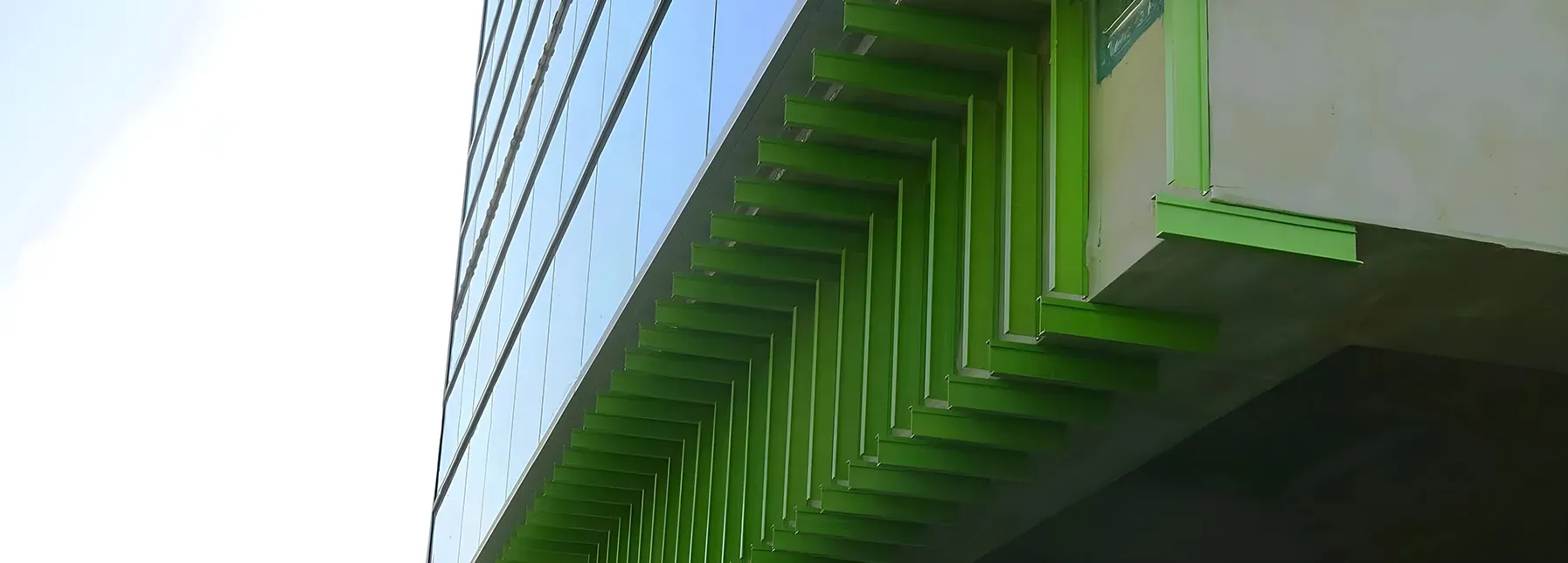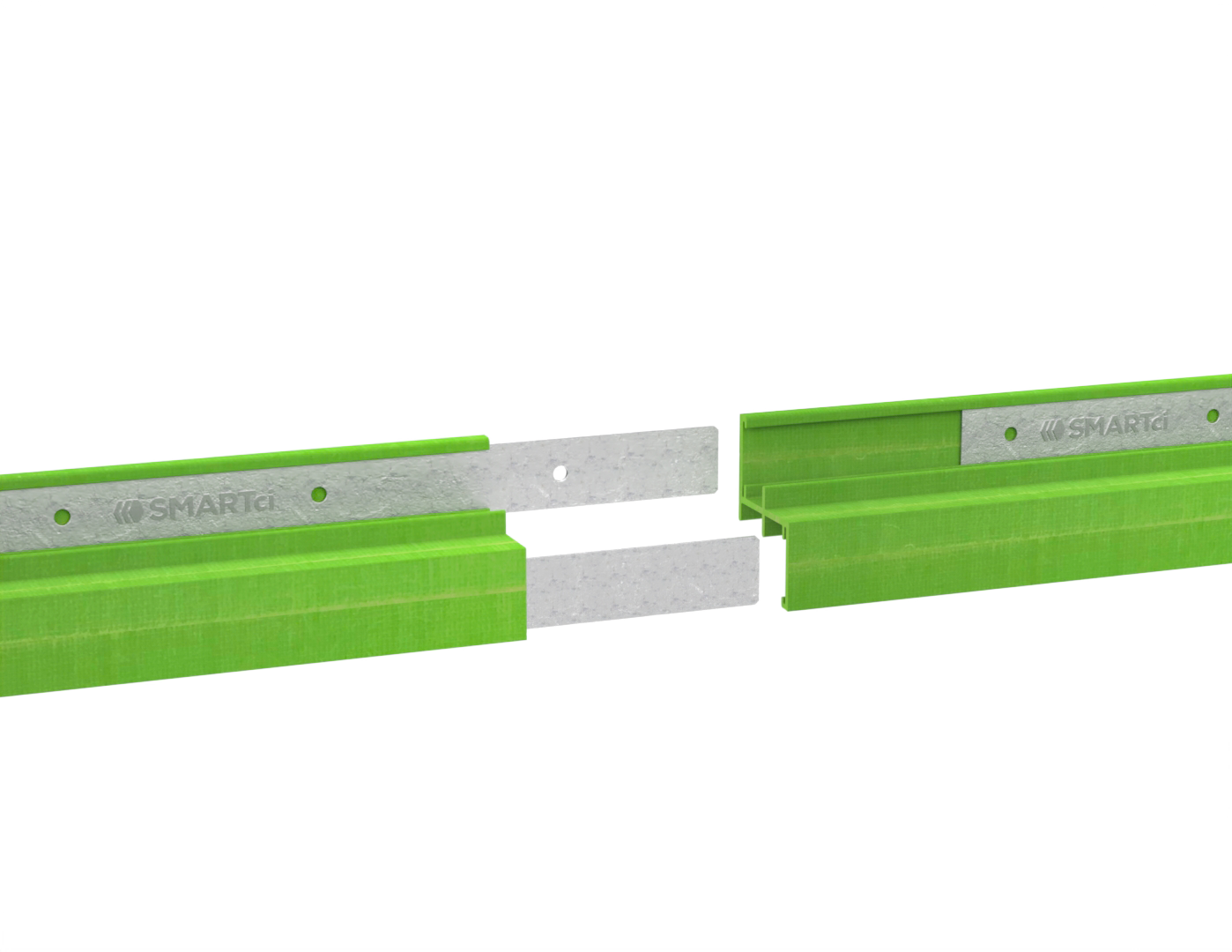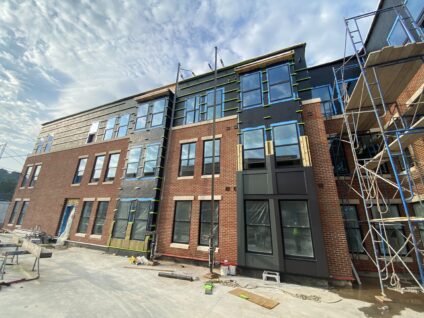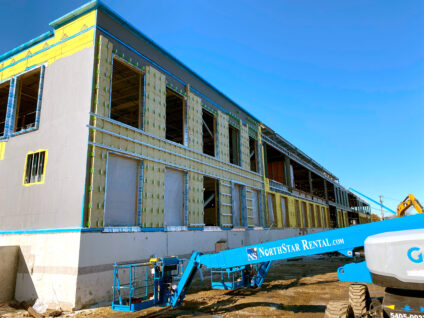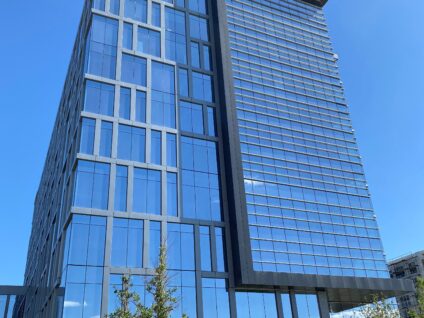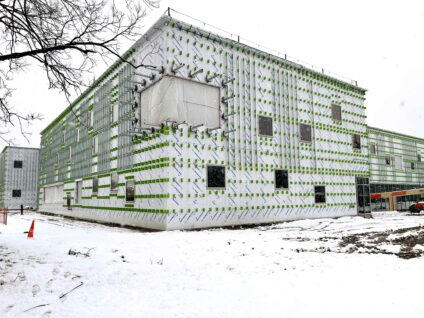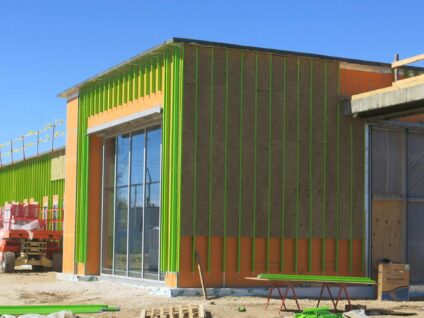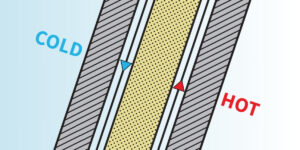What is CMH™?
Composite metal hybrid – more commonly referred to as CMH – is a high-performance construction material that combines the corrosion-resistant and insulative properties of fiberglass with the structural resilience of continuous metal components.
At the core of a composite metal hybrid technology lies an engineered fiberglass/FRP component – a non-conductive and versatile material well-suited for use in both new construction and repair applications — paired with robust steel plates. The steel plates further reinforce the fiberglass structure by adding rigidity and fastener retention. This unique composition of CMH systems guarantees high strength screws to permanently fasten into a continuous metallic structural support for effective and reliable load distribution, while also completely eliminating the thermal bridging that occurs when using conductive materials. CMH is not FRP, it is better — much better.
The CMH composition of GreenGirt Z-girts is engineered to outperform FRP and conventional steel in both thermal and structural capacities. Engineered to match (and exceed!) the load-bearing capabilities of traditional metal Z-girts of equivalent depth, CMH also features countless advantages over both FRP and conventional steel. Plus, installers often favor CMH systems for their ease of installation – comparable to installing conventional steel Z-girts.
Composition of CMH
Composite metal hybrid material is engineered from a dynamic blend of red-list free materials, meticulously engineered to maximize both strength and durability. CMH features lengthwise fiberglass rovings employed to provide essential tensile strength, crucial for withstanding longitudinal forces and maintaining structural integrity under tension. Crosswise, perpendicular fiberglass rovings bolster the material’s ability to handle stresses from multiple directions, enhancing its overall dimensional stability and resilience.
Encasing these fiberglass elements is a continuous filament mat contributes additional bulk and impact resistance, efficiently distributing any external forces across the material’s surface. This mat is embedded within a specially formulated resin that solidifies and forms a cohesive matrix that locks the fibers in place, ensuring uniform load distribution.
On the exterior, cantilevering steel plates are intgegrated into each of the substrate- and cladding-facing flanges of the CMH profile to enhance rigidity and fastener retention. Maximized for strength, durability, and thermal efficiency, CMH can also be optimized to the specific architectural and structural requirements of every project — providing innovative materials solutions to modern building challenges.
How is CMH made?

Step 1:
Feeding and Shaping Raw Fibers in the Pultrusion Machine
Pre-selected, raw reinforced fibers are fed into the guides of a pultrusion machine. Common materials included are roving filaments or mats. The pultrusion guides shape the material into the finished profile as it is fed into the machinery.
Step 2:
Resin Impregnation in the Wet-Out Bath
The fiber materials are fed through a wet-out bath for resin impregnation. This wet-out bath typically consists of a polyester resin as well as a catalyst to aid in curing.
Step 3:
Shaping and Heating in the Die
Once the fiber materials have been thoroughly impregnated with resin, it continues through a heated die to form the shape of the desired profile.
Step 4:
Curing and Cutting to Specification
The fibers are brought to a temperature higher than the die, to ensure a complete separation of the product from the die. The cured profiles are then cut to its required length.
Step 5:
Inserting Steel Plates
Steel plates are inserted into both the front and back flanges of the GreenGirt profile. The reinforcement with two metal plates enhances the overall strength and fastener retention of the CMH profile.

